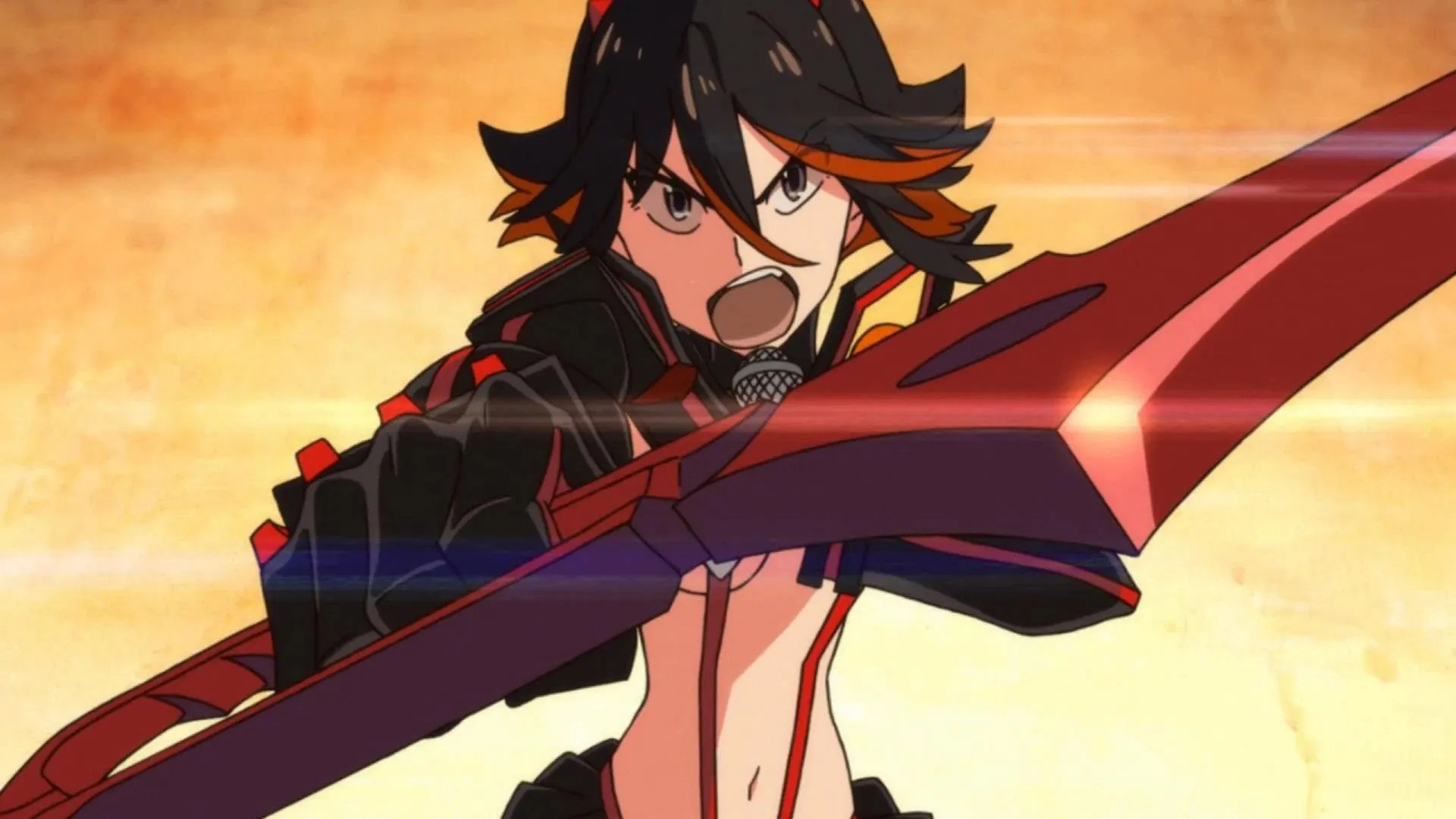With most anime series featuring plotlines deeply rooted in fiction and fantasy, it’s hard to assume that an anime could be based on anything but pure imagination. However,Kill la Kill, an anime series produced by Studio Trigger, defies this notion as its inspiration can be traced back to an ‘80s J-drama known asSukeban Deka.
DespiteKill la Killbeinga shonen battle animewith a semi-dystopian storyline, several instances within the series are clearly reminiscent ofSukeban Deka, with the final ending featuring multiple instances of similar shots between the two shows. Apart from the ending sequence, the anime’s protagonist, Ryuko Matoi, also encompasses several elements of the J-drama in terms of her overall outfit and personality.

RELATED:The Uncomfortable Hypocrisy of Kill La Kill
Sukeban Deka– The ‘80s Most Popular Female Delinquent Series
Before deciphering the hidden similarities between the two shows, it’s essential to first understand whatSukeban Dekaentails, and how this series rose to popularity in ‘80s Japan. The J-drama follows the life of Asamiya Saki, whose reputation is dubbed as a ‘sukeban’ – a term that quite literallytranslates to a ‘delinquent girl’in the Japanese language.
Due to a few circumstances that remain unexplained in the television series, Saki ends up in prison, with her only escape being a settlement offered by the police which required her to work as an undercover detective. With a yo-yo as her weapon of choice, Saki sets out on her crime-fighting journey, uncovering corrupt politicians and bringing them to justice.

During a time when having astrong-headed female protagonistwas unheard of,Sukeban Dekanormalized this concept, triggering a wave of television shows that followed a similar plotline of delinquent schoolgirls. Despite the concept of ‘sukeban’ slowly fading out of Japanese media, the impact of this J-drama was quite long-lasting – as evident from Saki’s inspirational rendition in the form ofKill la Kill’sRyuko Matoi.
Similarities BetweenKill la KillandSukeban Deka
Apart from the obvious hard-hitting female protagonists, the two shows boast a number of striking resemblances, confirming the notion that Ryuko is indeed based on Saki’s character. Ranging from similar outfits to all-out indistinguishable personality traits, it’s safe to say that looking into these differences can surely shed light on the inspiration that shaped this anime.
Recreation of the Ending Credit Sequence
The prime parallel between the two shows is the one-for-one recreation ofSukeban Deka’sending credit sequence inKill la Kill. It might seem like a coincidence at first, but with a side-by-side review of the ending’s backdrop, a deliberate use of the J-drama’s ending shots in the anime is evident.
RELATED:Is Cyberpunk: Edgerunners Trigger’s Most Mature Show Yet?
Being an exact frame-to-frame recreation of theoriginal ending credit sequence, it won’t be wrong to state thatKill la Kill’sending seems to be an homage to the original. With this distinctive similarity, Studio Trigger has made it apparent that the two shows are indeed linked to one another.
Ryuko’s Sukeban-Style Outfit
An obvious resemblance between the two shows is the use of sukeban-style clothing in Ryuko’s outfit.The sailor-like uniformmay seem peculiar to many, however, this style of school uniforms was quite common in ‘70s and ‘80s Japan, especially during the rise in delinquent schoolgirls in most Japanese highschools.
Apart from her uniform, Ryuko’s accessories also bear a visible resemblance to that of Saki’s. Thedistinct bright red gloveon her left hand is exactly the same as Saki’s signature style in theSukeban Dekamovies. Moreover, the wrist slitters worn by Ryuko also seems to be inspired by the sukeban’s yo-yos in the television series, being almost an exact replica of the trademark red weapon.

Strong-Headed Personalities
Both protagonists boast similar personality traits; bold, hard-hitting, and rebellious. Ryuko’s habit of diving right into battle with her opponents is also reminiscent of Saki’s direct approach to fighting crime, entering head-on with her iron-clad yo-yo.
The element of rebellion is also vivid in both characters. Saki’s defiant characteristics need no introduction as her fight against the corrupt people in power is enough of a display of her mutinous actions. Similarly, Ryuko refuses to bow down to Satsuki’s Elite Four, standing firm against the autocratic rule that was set up in Honnouji Academy. If this wasn’t enough of a demonstration of being a nonconformist, Ryuko even goes head-on against Ragyo Kiryuin, who is later revealed to be Ryuko’s very own mother and themain antagonist of the series.

Furthermore, their display ofcourage and bravery in the face of adversityis another trait worth mentioning. Not once do Saki and Ryuko back down from a fight in their respective series, indicating an iron will that is ready to brave whatever the antagonists throw at them. Ryuko’s personality dons this trait even more firmly inKill la Kill, hinting towards Saki being the direct source of inspiration for her character.
MORE:Pro Tips For Kill la Kill - If You Should Know
